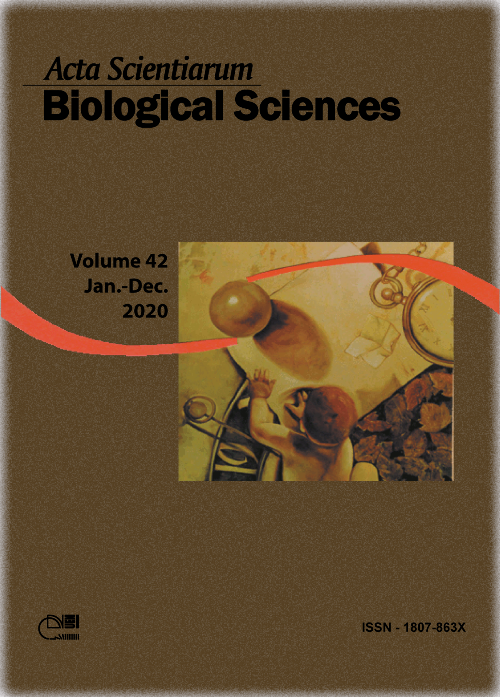Renal myxoboliosis of Metynnis hypsauchen in the Brazilian Amazon: morphological and histopathological aspects
Resumo
In their natural habitat, fish are constantly threatened by icthyoparasites, notably those from the Phylum Cnidaria, Hatschek, 1888, represented by species of the Myxozoa, responsible for infections in fish that cause complications to their health that can lead to death. Among these parasites, the genus Myxobolus Butschli, 1882 is responsible for the largest number of infections described in fishes from the Americas. This study describes the morphological and histopathological aspects of parasitism by Myxobolus sp. in specimens of Metynnis hypsauchen, obtained from the Capim river, in the municipality of Ipixuna do Pará, Pará, Brazil. During the months of August and March, 2018, 20 animals were captured, euthanized and autopsied. With the aid of a stereomicroscope an external and internal investigation was performed on the animals for the purpose of finding lesions or parasitic cysts, followed by confirmation of infection in Light Microscopy (ML). Cysts and Fragments from parasitized tissues were processed using techniques for histology and Scanning Electron Microscopy (SEM). For histology they were stained with Hematoxylin-Eosin (H-E) and Ziehl-Neelsen and for SEM Micrographs were captured, using equipment from the Museu Paraense Emílio Goeldi. The prevalence of parasitism was 60% (12/20) of the specimens, and the cysts were in the epithelium and lumen of the renal tubules, causing histopathological changes. The characteristics of the parasite spores are those associated with the genus Myxobolus, with an ellipsoid format, two polar capsules and a sporoplasm region. It was possible to confirm a high parasite load of Myxobolus, with compromised renal functions. This study is the first to describe Myxospore in Metynnis hypsauchen.
Downloads
DECLARAÇÃO DE ORIGINALIDADE E DIREITOS AUTORAIS
Declaro que o presente artigo é original, não tendo sido submetido à publicação em qualquer outro periódico nacional ou internacional, quer seja em parte ou em sua totalidade.
Os direitos autorais pertencem exclusivamente aos autores. Os direitos de licenciamento utilizados pelo periódico é a licença Creative Commons Attribution 4.0 (CC BY 4.0): são permitidos o compartilhamento (cópia e distribuição do material em qualqer meio ou formato) e adaptação (remix, transformação e criação de material a partir do conteúdo assim licenciado para quaisquer fins, inclusive comerciais.
Recomenda-se a leitura desse link para maiores informações sobre o tema: fornecimento de créditos e referências de forma correta, entre outros detalhes cruciais para uso adequado do material licenciado.












1.png)




3.png)













